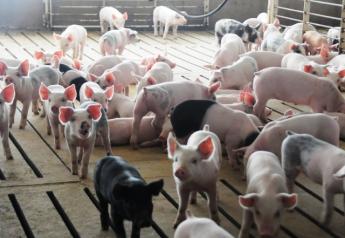Pork Industry Backs the Protect Farmers From the SEC Act

Congressman Frank Lucas (OK-03) proposed legislation that would exclude agriculture from the U.S. Securities and Exchange Commission’s (SEC) climate disclosure rulemaking that proposed new climate disclosure requirements, such as climate-related financial data and greenhouse gas emissions insights, for public companies.
Specifically, the Protect Farmers from the SEC Act:
- Prohibits the SEC from requiring an issuer of securities to disclose greenhouse gas emissions from upstream and downstream activities in the issuer’s value chain arising from a farm
- Defines the production, manufacturing, or harvesting of an agricultural product through the Agricultural Marketing Act of 1946, outlines upstream and downstream activities, and defines greenhouse gases
- Removes the SEC’s exemptive authority in relation to this Act
“American pig farmers remain committed to transparency and constant improvement in climate-related matters which is demonstrated by the industry shrinking their GHG footprint by over 21 percent over the last three decades,” Terry Wolters, NPPC president and owner of Stoney Creek Farms in Pipestone, Minn., said in a release. “We applaud Congressman Lucas for a bill that would protect all farmers from the added layers of reporting requirements and costs associated with the proposed rule.”
American Farm Bureau Federation President Zippy Duvall said the SEC’s proposed climate disclosure rule could create substantial costs and legal liabilities for farm families.
“Unlike large corporations, farmers don’t have teams of compliance officers or attorneys dedicated to handling SEC compliance issues,” Duvall said in a release.
The Protect Farmers from the SEC Act is supported by the American Farm Bureau Federation, National Cattlemen’s Beef Association, National Association of Wheat Growers, National Cotton Council, National Corn Growers Association, National Pork Producers Council, USA Rice, American Sugar Alliance, American Soybean Association, National Potato Council, United States Cattlemen’s Association, National Council of Farmer Cooperatives, Agricultural Retailers Association, Oklahoma Farm Bureau, and the Oklahoma Cattlemen’s Association.
Lucas was joined by 101 original cosponsors. See list here.







